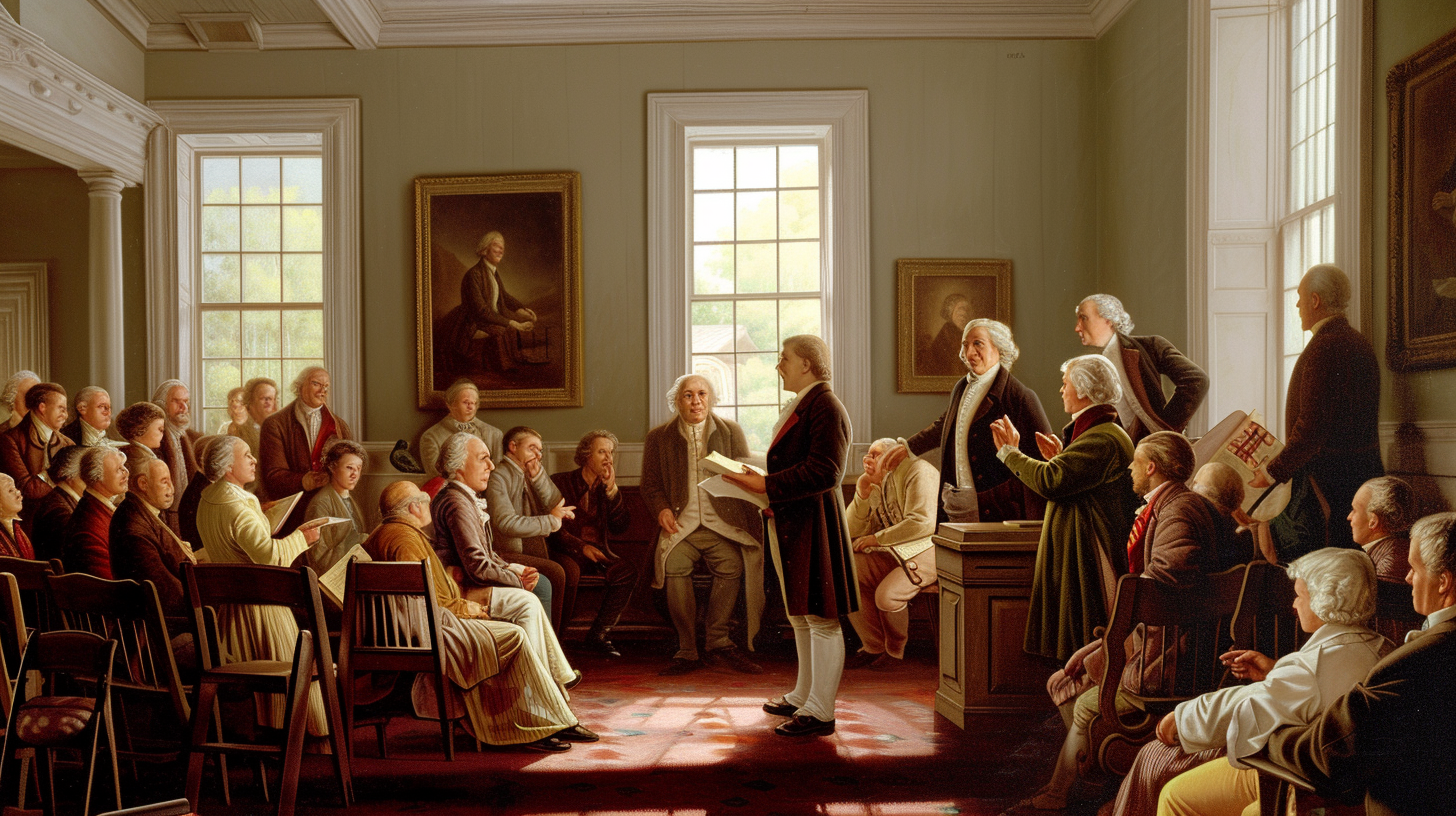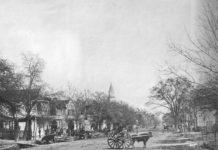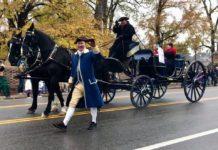Williamsburg, once the thriving capital of Virginia, holds a significant place in American history as a hotbed of revolutionary fervor during the colonial period. As the seat of government and a center of political activity, Williamsburg played a pivotal role in shaping the course of the American Revolution.
House of Burgesses
In 1765, the House of Burgesses, meeting in Williamsburg’s Capitol building, adopted Patrick Henry’s fiery resolution denouncing the Stamp Act, a controversial tax imposed by the British Parliament on the American colonies. This resolution marked the beginning of the colonial resistance movement against British rule. The city itself witnessed protests against the Stamp Act, including a notable demonstration on Duke of Gloucester Street.

Civil Disobedience
In 1769, Williamsburg residents staged a unique protest against British taxation policies by attending a ball in honor of Governor Norborne Berkeley dressed in homespun clothing, a deliberate act of defiance against taxes on imported goods. This act of civil disobedience highlighted the growing discontent among the colonists.
Dunmore vs The Colonists
The tensions between the patriots and the colonial governor, John Murray, the earl of Dunmore, came to a head in 1774 when Dunmore dissolved the General Assembly following their support for Boston after the Tea Party protest. In April 1775, Dunmore further antagonized the colonists by ordering the removal of gunpowder stores from Williamsburg’s powder magazine. This action, seen as a direct assault on their rights, galvanized the colonists and led to demands for its return.
With Dunmore’s departure later that year, Williamsburg turned its attention to supporting the Revolutionary War effort. The Williamsburg Public Store and its network of artisans played a crucial role in supplying Virginia’s troops throughout the conflict.
However, Williamsburg’s vulnerability to enemy attacks became apparent as the main theater of war shifted to the south. In 1779, the General Assembly passed an act to move the seat of government inland to Richmond, citing the city’s exposure to enemy threats. The move was completed in 1780, and Richmond has remained Virginia’s capital ever since.

Revolutionary Battles
Williamsburg continued to be a site of conflict during the Revolutionary War, with skirmishes such as the Battle of Spencer’s Ordinary and the Battle of Green Springs taking place on its outskirts. These engagements, though less well-known than the Siege of Yorktown, underscored the city’s importance as a strategic location in the struggle for independence.
Williamsburg’s Historic Significance
Today, Williamsburg’s historic significance is preserved in its well-preserved colonial architecture and museums, offering visitors a glimpse into the tumultuous period of the American Revolution. As a symbol of the colonial spirit of resistance, Williamsburg stands as a testament to the enduring legacy of the revolutionaries who once walked its streets.
More American History
The Library of Congress’s American Memory Collection is a vast digital archive that provides access to a wealth of primary sources related to American history and culture. It includes documents, photographs, maps, music, and other materials dating back to the colonial era. The collection covers a wide range of topics, including the American Revolution, westward expansion, the Civil War, and the civil rights movement. By digitizing these materials and making them available online, the American Memory Collection offers researchers, students, and the general public a unique opportunity to explore and engage with America’s past in a meaningful and immersive way.





























